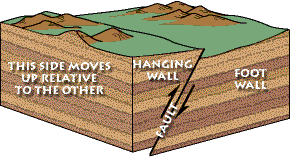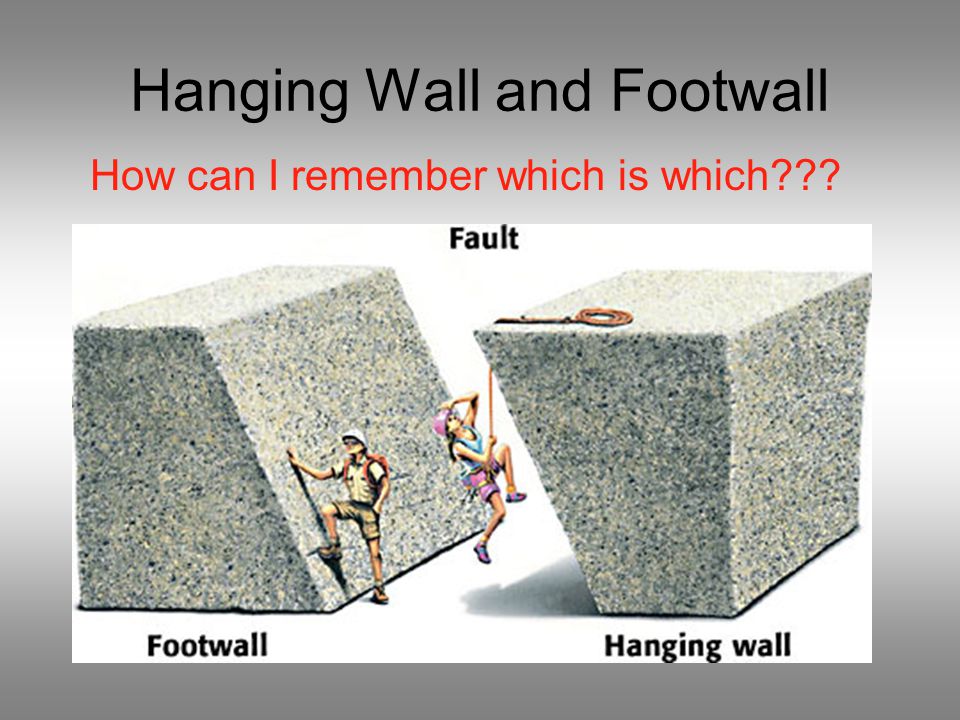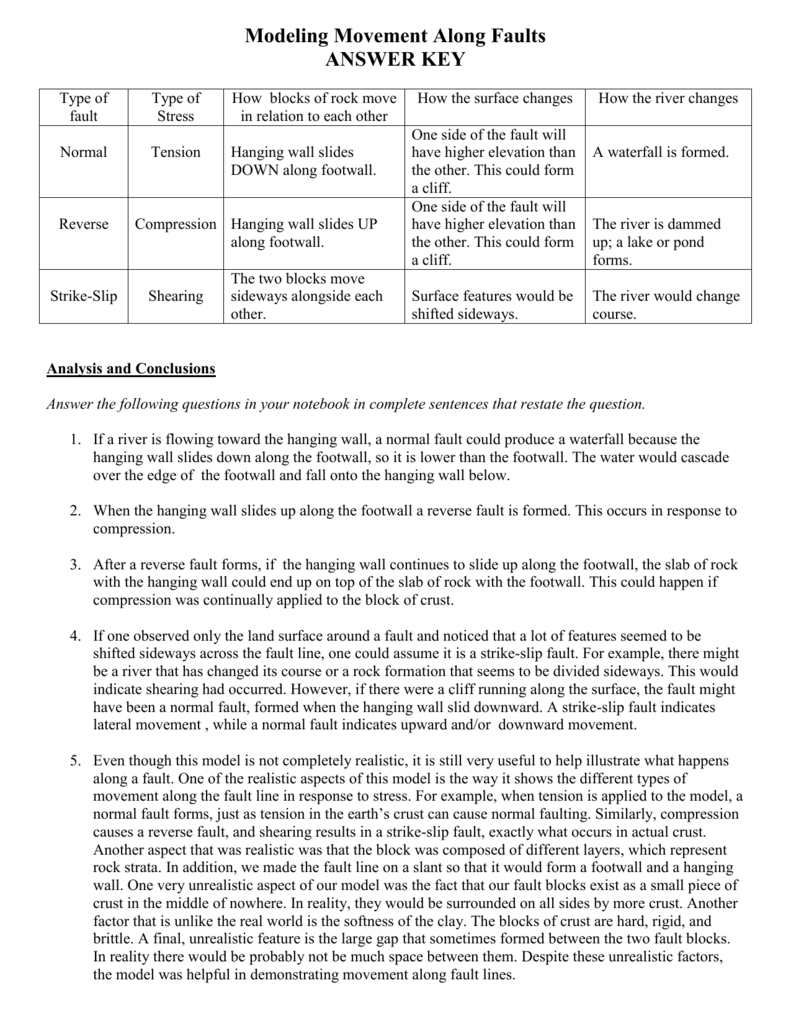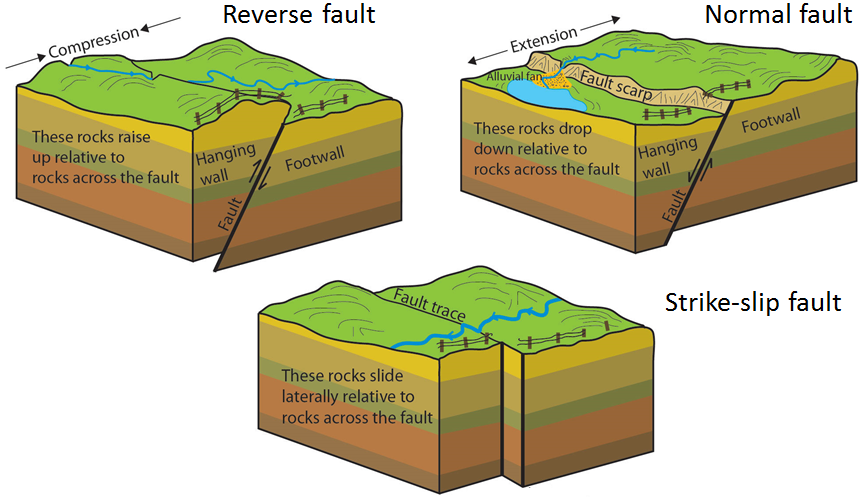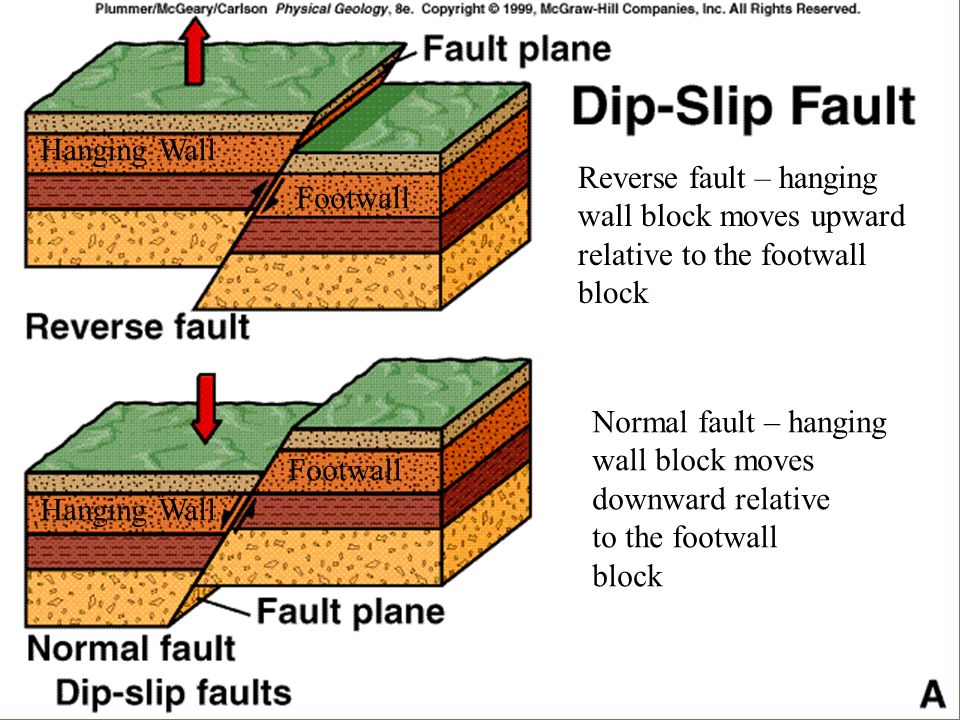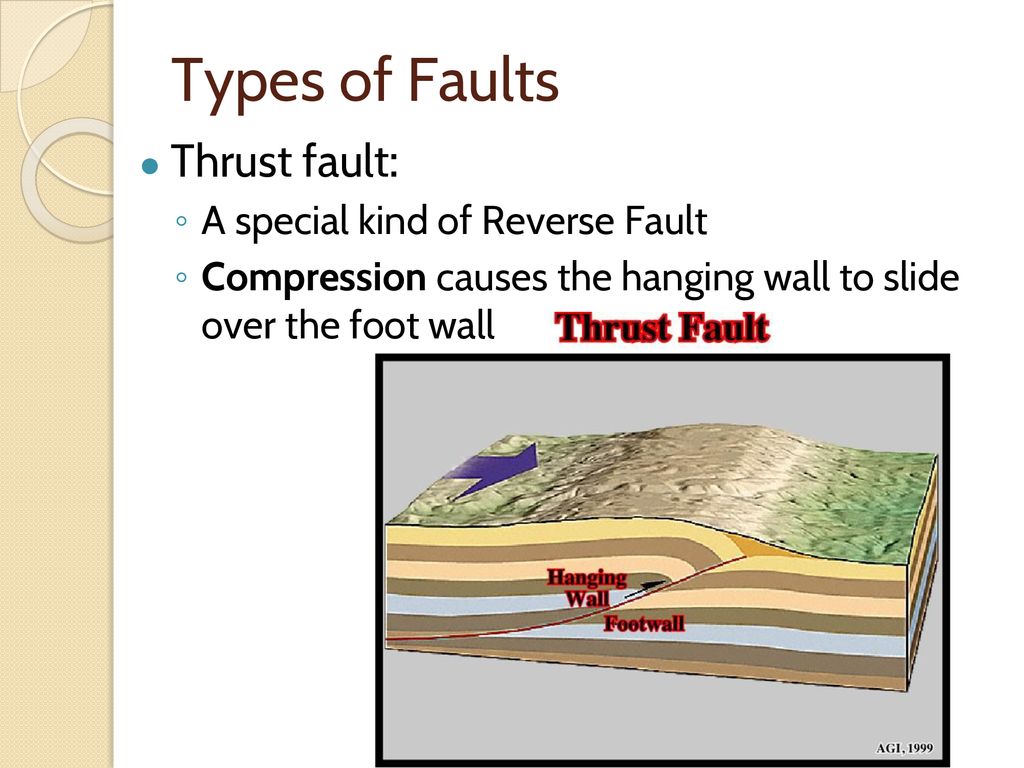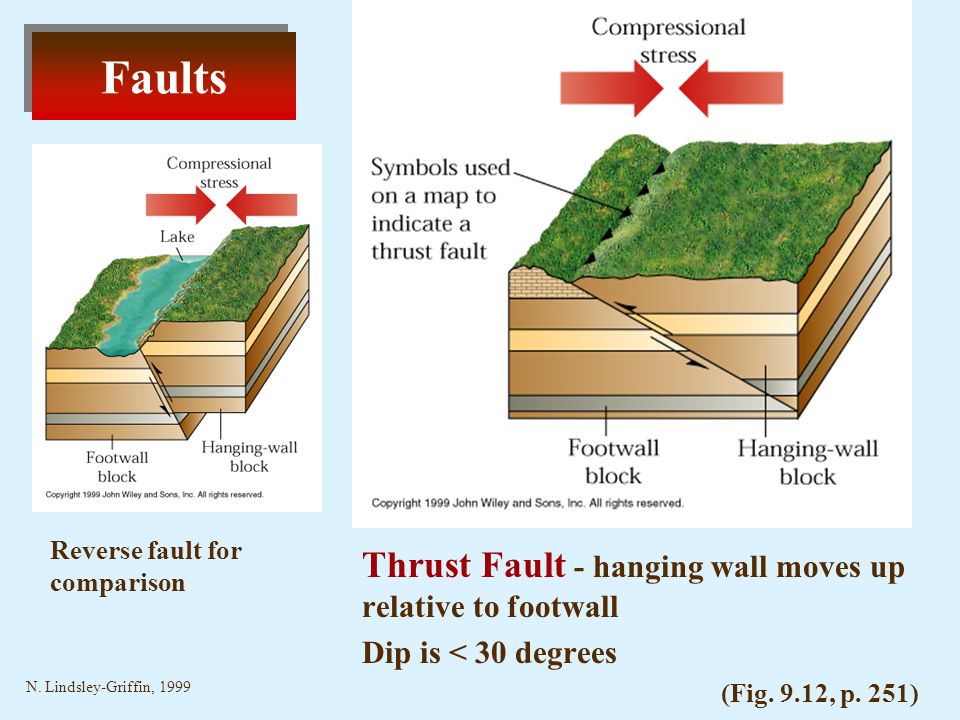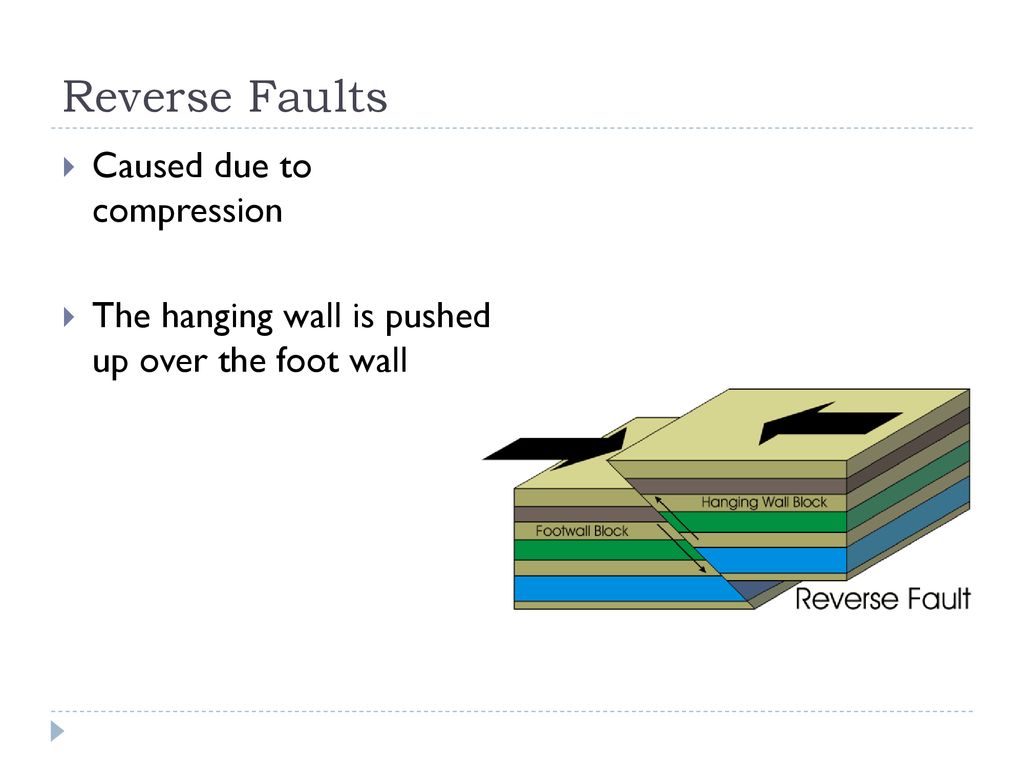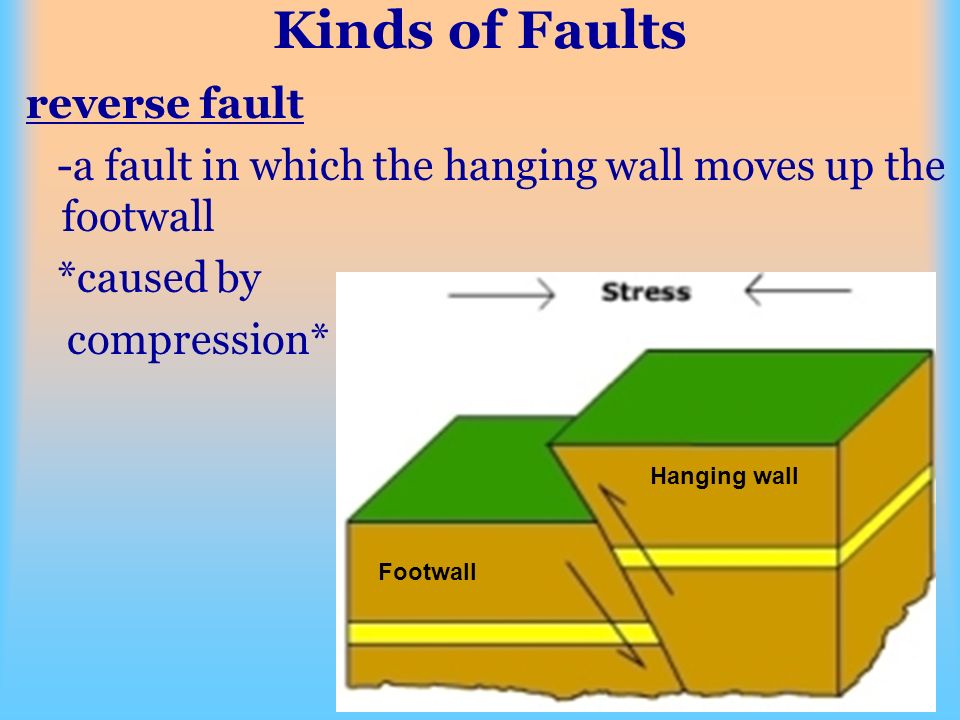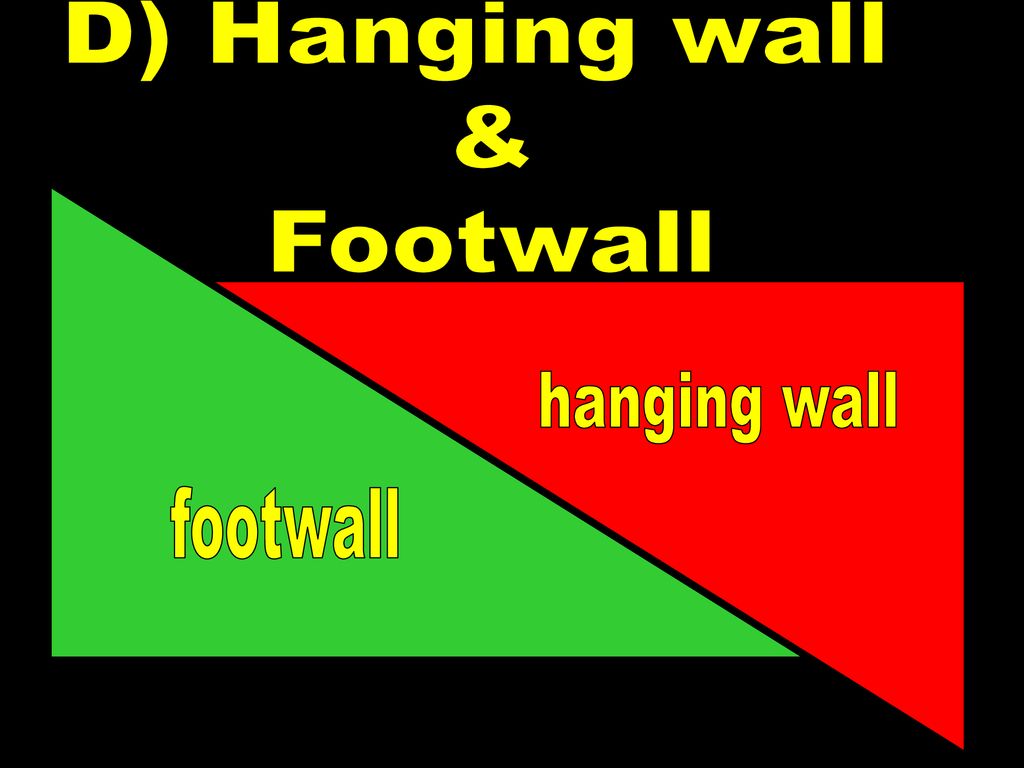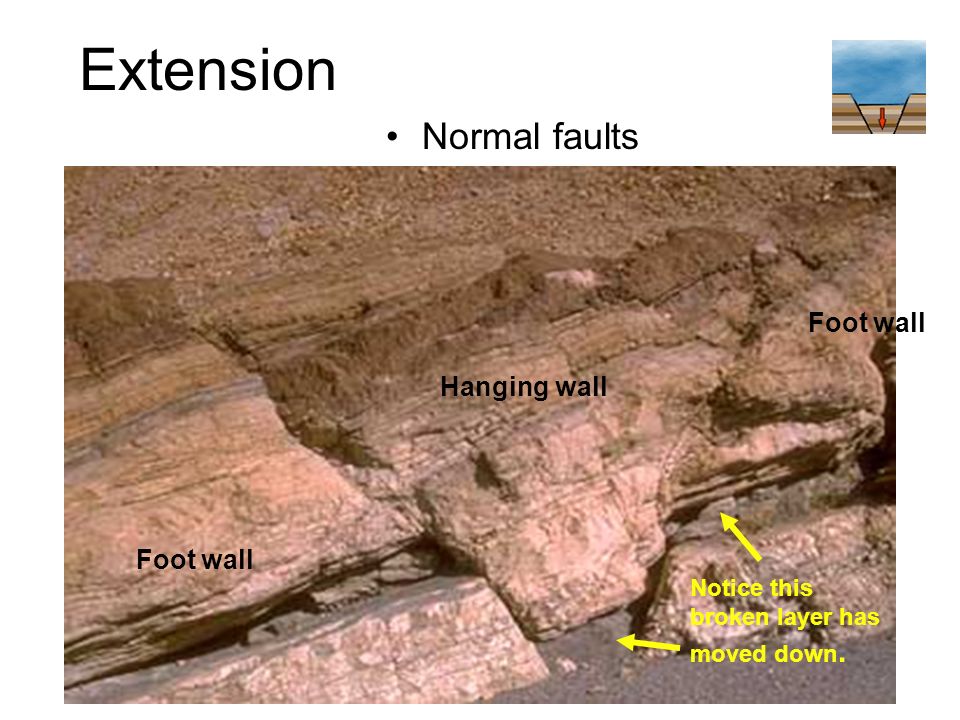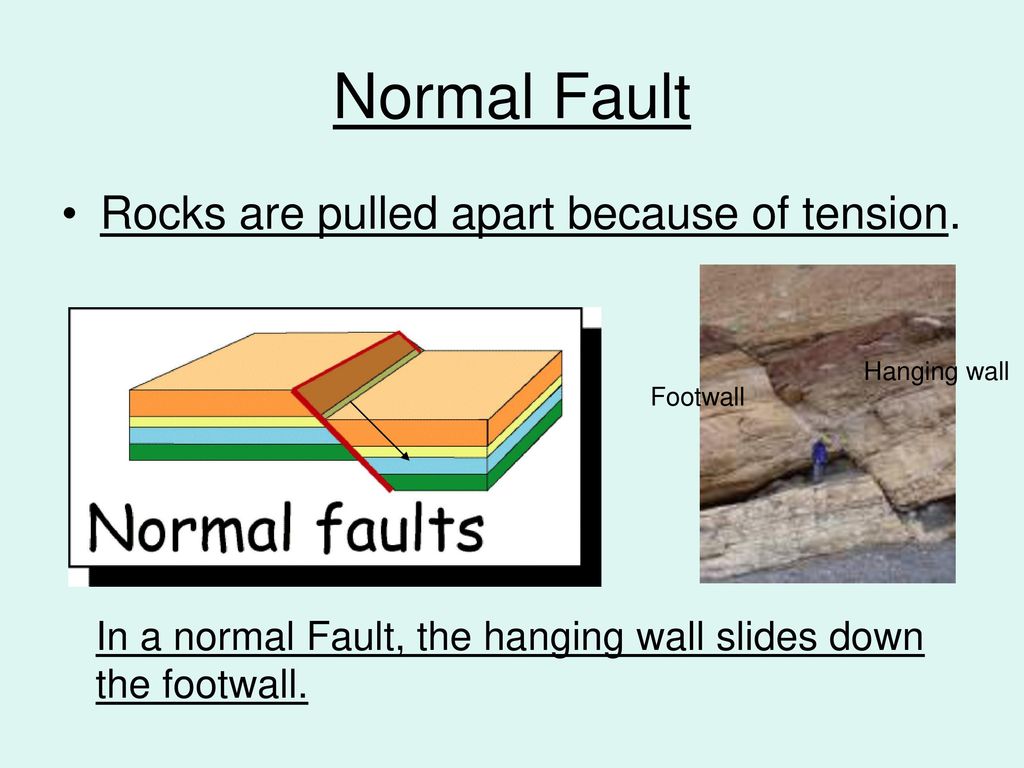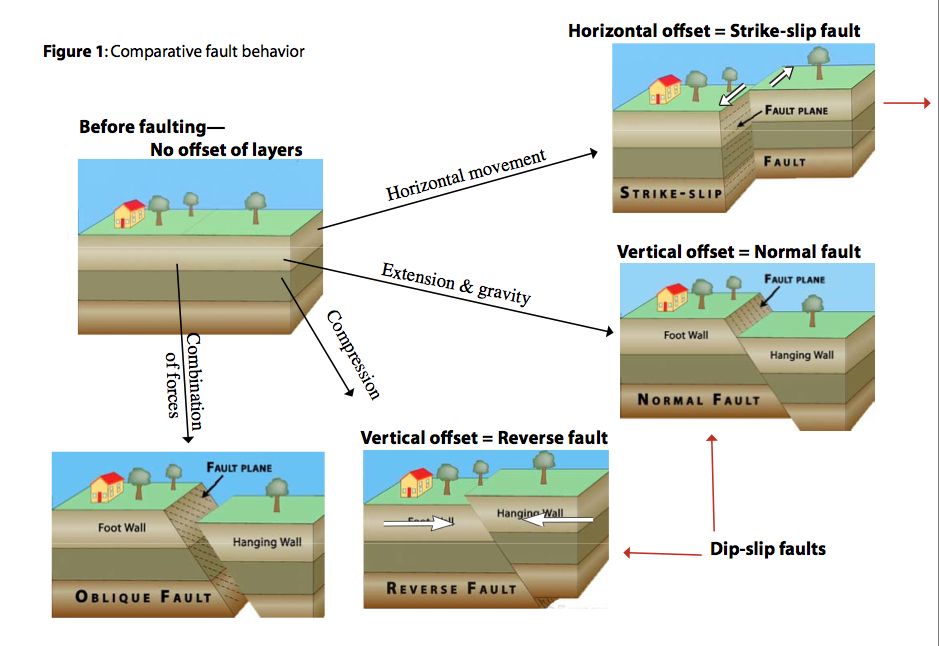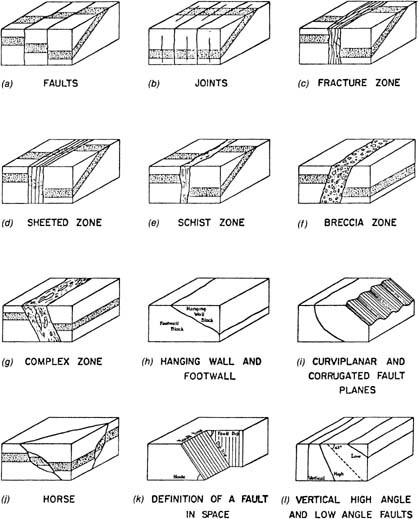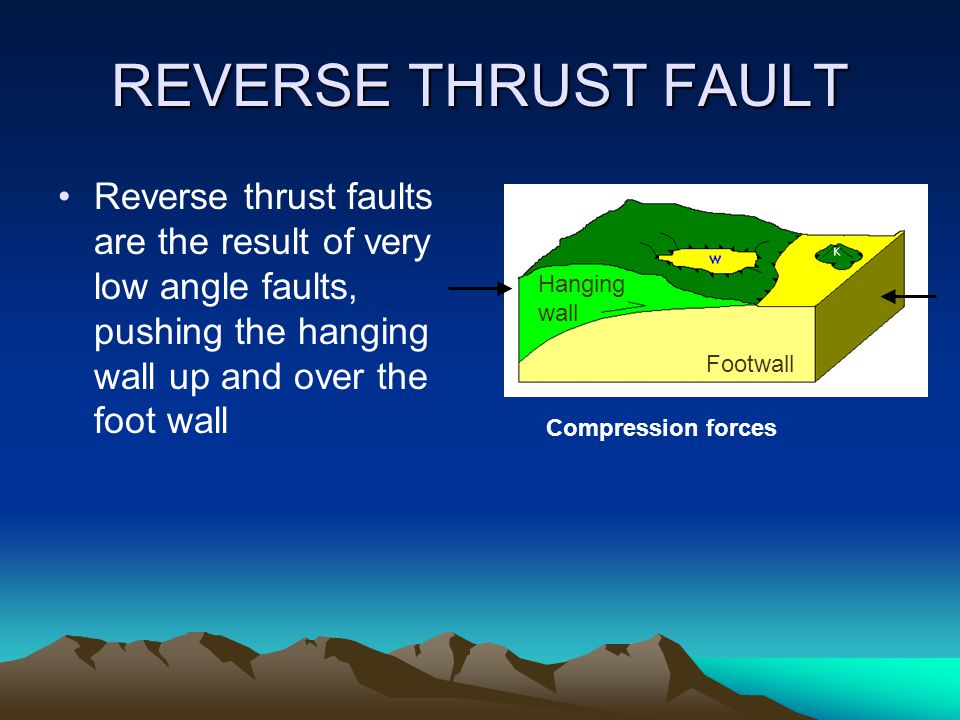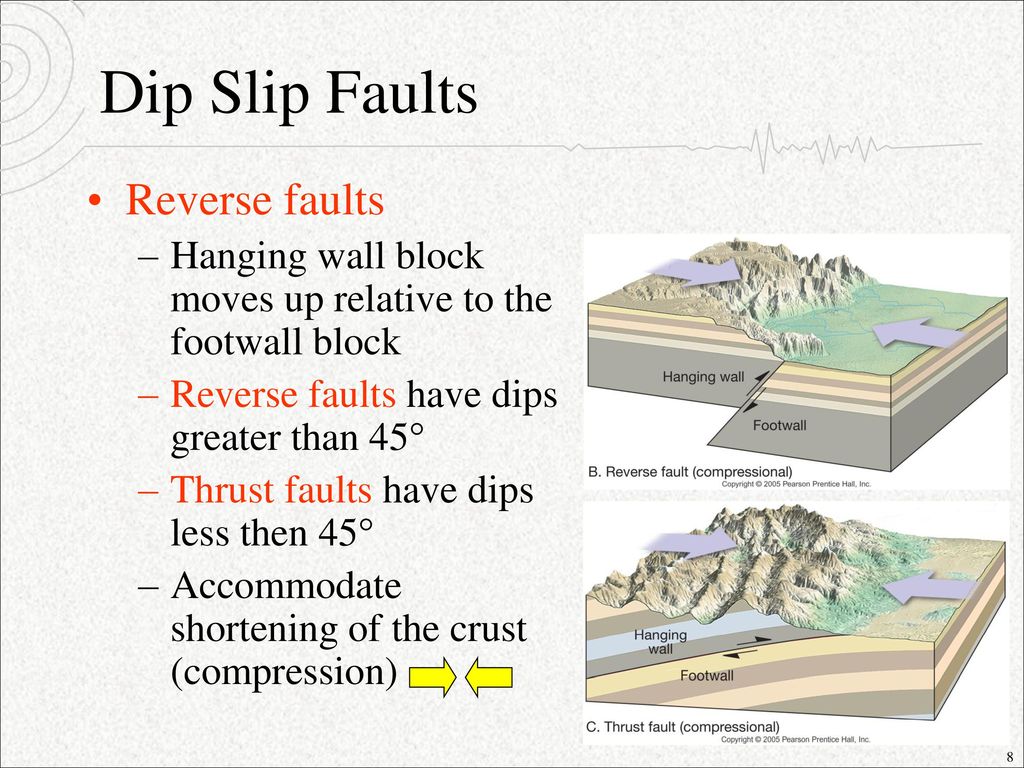The Hanging Wall Slides Up And Over The Footwall

There are three different types of faults normal faults reverse faults and strike slip faults.
The hanging wall slides up and over the footwall. These are often found in intensely deformed mountain belts. There is little up or down motion is a. When working a tabular ore body the miner stood with the footwall under his feet and with the hanging wall above him. Reverse faults form when the hanging wall moves up.
A strike slip fault or a latteral fault moves in opposition of each other. This terminology comes from mining. The hanging wall occurs above the fault plane and the footwall occurs below it. A strike slip fault that forms the.
The hanging wall moves up and over the footwall. A reverse fault is when. In a non vertical fault where the fault plane dips the footwall is the section of the fault that lies under the fault while the hanging wall lies over the fault. Mike dunning dorling kindersle getty images.
Is the following sentence true or false. Thrust faults are reverse faults that dip less than 45. The hanging wall will slide upwards right. In a reverse fault the hanging wall right slides over the footwall left due to compressional forces.
The hanging wall slips downward below the footwall is a. Strike slip faults have a different type of movement than normal and reverse faults. The names come about from the. When movement along a fault is the reverse of what you would expect with normal gravity we call them reverse faults.
Hanging wall and footwall the two sides of a non vertical fault are known as the hanging wall and footwall.
